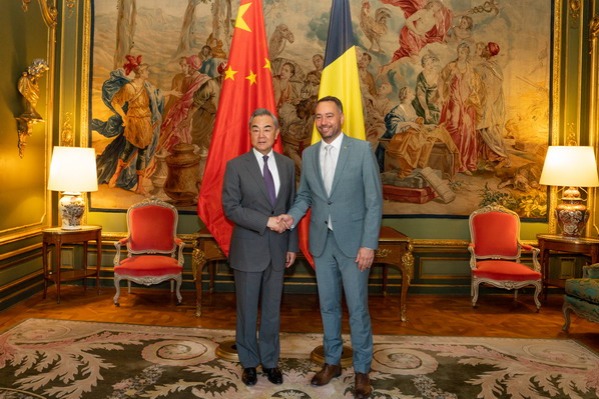103-year-old artist still inspires understanding of Chinese culture


It's intriguing to see a 103-year-old traditional Chinese master teach a group of Americans how to paint in a fusion of Chinese and Western styles.
"Any little object can be your subject — a random piece of wood, a withered leaf — even a rock you saw in a mountain may move you. An artist hopes the viewers can communicate with him through his paintings," Hou Beiren, a renowned contemporary Chinese painter in California, told the audience at a new exhibition on Sunday.
In the audience was Harve Citrin, who has been learning from Hou since 1994. "His style is not precise in terms of representing something, but it was suggestive of things real, whether it was a person, a mountain or a tree," said Citrin, 85, a retired lawyer.
He still remembers his first encounter with Hou. One day he passed the Pacific Art League, an art organization in Palo Alto, and saw a Chinese man giving a demo lesson through the windows. He walked in and joined the class.
"I've been admiring his work ever since," said Citrin. "I like to be more free with my representations."
Hou, who has been living and teaching in California for more than a half century, is known for the "splash ink and color" painting style.
The exhibition, which runs through Jan 5 at the Silicon Valley Asian Art Center in Santa Clara, features 12 paintings of lotus created by Hou when he was around the age of 100.
The paintings reflect the artist's nostalgia for his hometown in Northeast China. "Every lotus in the painting is reminiscent of my mom," he said.
Born in 1917 in Liaoning province, Hou spent much of his life away from his native land. After extensive travel and relocation, he moved from Hong Kong to the US in 1956 and settled in Los Altos, California, where he embraced the "splash ink and color" style under the influence of Chinese painting master Zhang Daqian (1899-1983), who lived in California for nine years in the 1960s and 1970s.
Splash ink and color is a technique of working with splashy, colorful washes to create an abstract, expressive style. The style was never dominant in Chinese art history until the emergence of Zhang.
"For thousands of years, ink painting was firmly entrenched as the most respected way of painting. Color was traditionally viewed as vulgar, and artists felt inhibited to use bright colors," said Shu Jianhua, curator of Silicon Valley Asian Art Center.
Hou's paintings, employing bright colors, primarily yellow, red and white, broke away from the conventional Chinese ink painting and united Chinese brush-painting tradition with the bold and impressionistic art of the West, he said.
"He (Hou) was interested in blending Western style with his Chinese style. He wanted his students to blend the ideas of both," said Citrin. One of his paintings, a splash color and ink landscape, was selected to be exhibited in China representing Hou's students' works.
"So I think I was fulfilling that. I feel like it's fulfilling his desire to teach," said Citrin.
He said Hou's commentary on Chinese paintings and the association with Chinese people also helped him better appreciate the Chinese culture and reflect on the current relationship between the two countries.
"When (US President Donald) Trump first announced his trade sanctions on China and said it's easy to win, I knew he didn't understand China. I knew it would never work," said Citrin. "What Trump has gotten out of it is nothing and caused a lot of agony and embarrassment."
The story of Hou also attracted the attention of the Los Altos History Museum, which organized a special exhibition in 2016 in honor of his 100th birthday.
Some of his paintings reflect that relationship between living in Los Altos and his effort to combine the heritage of his Chinese art, said Elizabeth Ward, executive director of the museum.

































